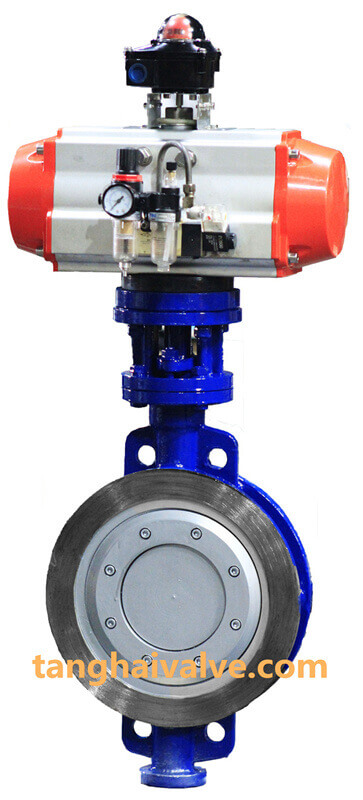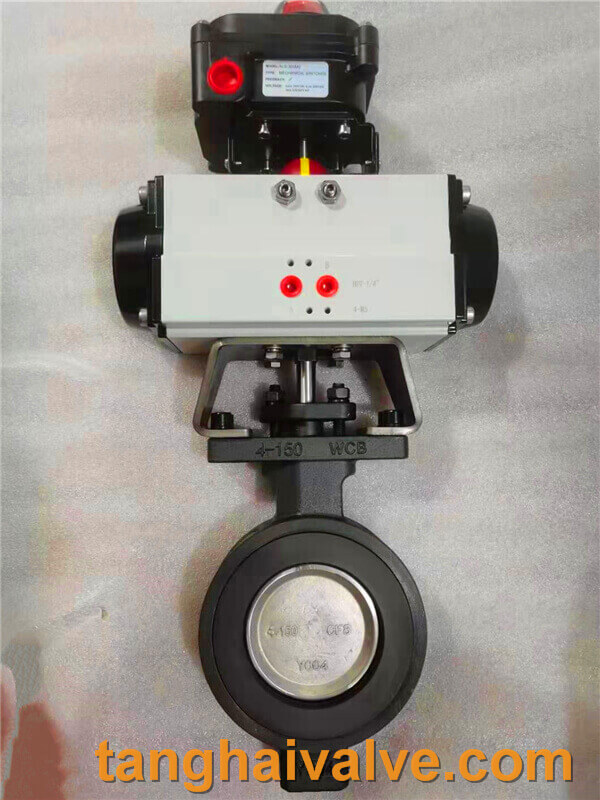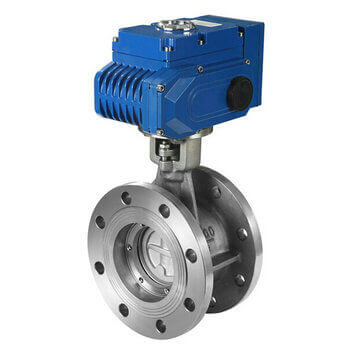Types of Sealing Material of Electric Wafer Butterfly Valve
Electric wafer butterfly valves can be divided into soft-sealed butterfly valves and hard-sealed butterfly valves, which are distinguished according to the sealing materials of electric butterfly valves.

triple eccentric butterfly valve-wafer-lug-double flange-welded (5)
The soft sealing butterfly valve’s sealing feature is that one side of the two sides is made of metal material, and the
other side is made of elastic non-metal material, that is, one of the valve seat and the valve plate is made of elastic material, which is called “soft seal” . The hard seal butterfly valve means that both sides of the seal pair are made of metal materials or other harder materials, that is, the valve seat and the valve plate are both hard materials, which is called “hard seal”.
The difference between soft seal and hard seal of electric wafer butterfly valve
Although the soft-sealed electric wafer butterfly valve has certain strength, hardness and temperature resistance, it has good sealing performance and can achieve zero leakage. But it is not resistant to high temperature, easy to wear, and has poor mechanical properties. Our common ones are steel + rubber, steel + PTFE and so on. The hard seal of the butterfly valve has poor sealing performance, but it is resistant to high temperature, abrasion and mechanical properties. Such as steel + steel, steel + copper, steel + graphite, steel + alloy steel. The steel here can be cast iron, cast steel, alloy steel or surfacing, sprayed alloy.
The advantages and disadvantages of the soft and hard seals of the electric wafer butterfly valve
In terms of sealing performance, the soft-seal electric wafer butterfly valve is relatively good, but compared with the hard-seal butterfly valve’s corrosion resistance, the soft-seal electric butterfly valve cannot meet the process requirements for corrosive materials. The advantage of the soft sealing butterfly valve is that it has good sealing performance, but the disadvantage is that it is easy to age, wear, and has a short service

Double offset-butterfly valve-D972F-150lbC (1)
life. The hard-sealed butterfly valve has a long service life, but the sealing performance is relatively worse than that of the soft-sealed butterfly valve. Now there is a kind of multi-level sealing electric wafer butterfly valve that combines the advantages and disadvantages of soft sealing and hard sealing to form a complement to each other, which is a major upgrade of the product.
Different working conditions of soft and hard sealing of electric wafer butterfly valve
Let’s take a look at the different working conditions of the soft seal and the hard seal of the electric wafer butterfly valve from four aspects. The details are as follows:
1. Structure: soft-sealed electric wafer butterfly valves are mostly centerline butterfly valves, and hard-sealed electric wafer butterfly valves are mostly single eccentric butterfly valves, double eccentric butterfly valves, and triple eccentric butterfly valves.
2. Temperature resistance: soft-sealed electric butterfly valve is used in normal temperature environment. The hard-sealed electric butterfly valve can be used in low temperature, normal temperature, high temperature and other environments.
3. Pressure: The soft-sealed electric wafer butterfly valve can be used in low and normal pressure, and the hard-sealed electric butterfly valve can also be used in medium and high pressure conditions.
4. Sealing performance: The soft sealing electric butterfly valve and the triple eccentric hard sealing electric butterfly valve have better sealing performance. The triple eccentric butterfly valve can maintain a good seal under high pressure and high temperature environment.
Based on the above characteristics, the soft-sealed electric wafer butterfly valve is suitable for the two-way opening and closing and adjustment of ventilation and dust removal pipelines, water treatment, light industry, petroleum, chemical and other industries. Hard-sealed electric butterfly valves are mostly used in heating, gas, gas, oil, acid and alkali environments.
TH Valve is a professional manufacturer of butterfly valve, gate valve, check valve, globe valve, knife gate valve, ball valve with API, JIS, DIN standard, used in Oil, Gas, Marine industry, Water supply and drainage, fire fighting, shipbuilding, water treatment and other systems, with Nominal Diameter of DN50 to DN1200, NBR/EPDM/VITON, Certificates & Approvals: DNV-GL, Lloyds, DNV, BV, API, ABS, CCS. Standards: EN 593, API609, API6D
Video of center-lined butterfly valve:
Video of double eccentric butterfly valve:
Related news/knowledge:
What are the characteristics of the soft sealing butterfly valve
Fluorine-lined butterfly valve vs metal seated butterfly valve
What are the characteristics of the hard seal butterfly valve
pneumatic fluorine-lined butterfly valve vs pneumatic hard-sealed butterfly valve





 © Copyright 2020 Tianjin Tanghaidongyang Valve Co., Ltd. All Rights Reserved.
© Copyright 2020 Tianjin Tanghaidongyang Valve Co., Ltd. All Rights Reserved.